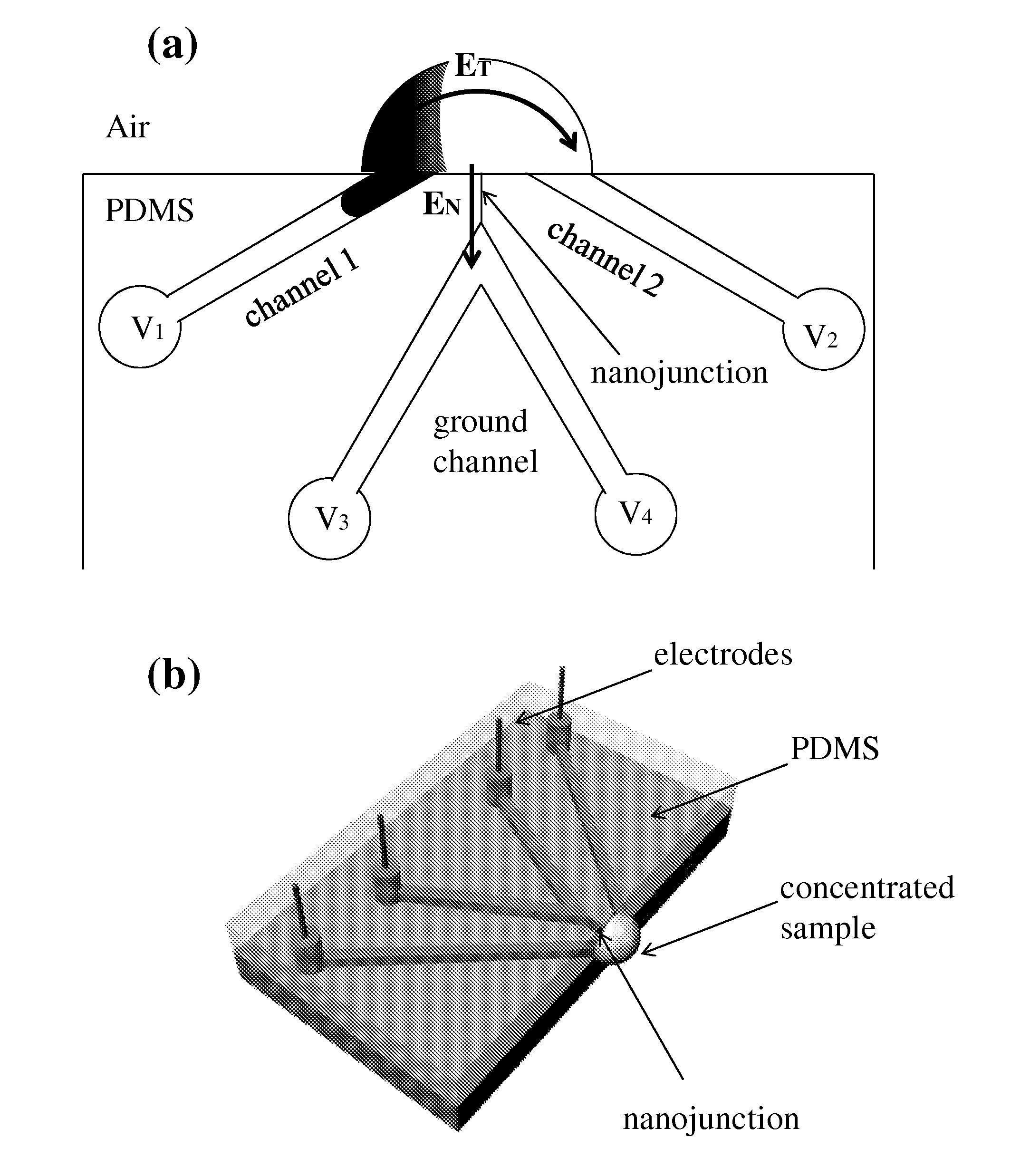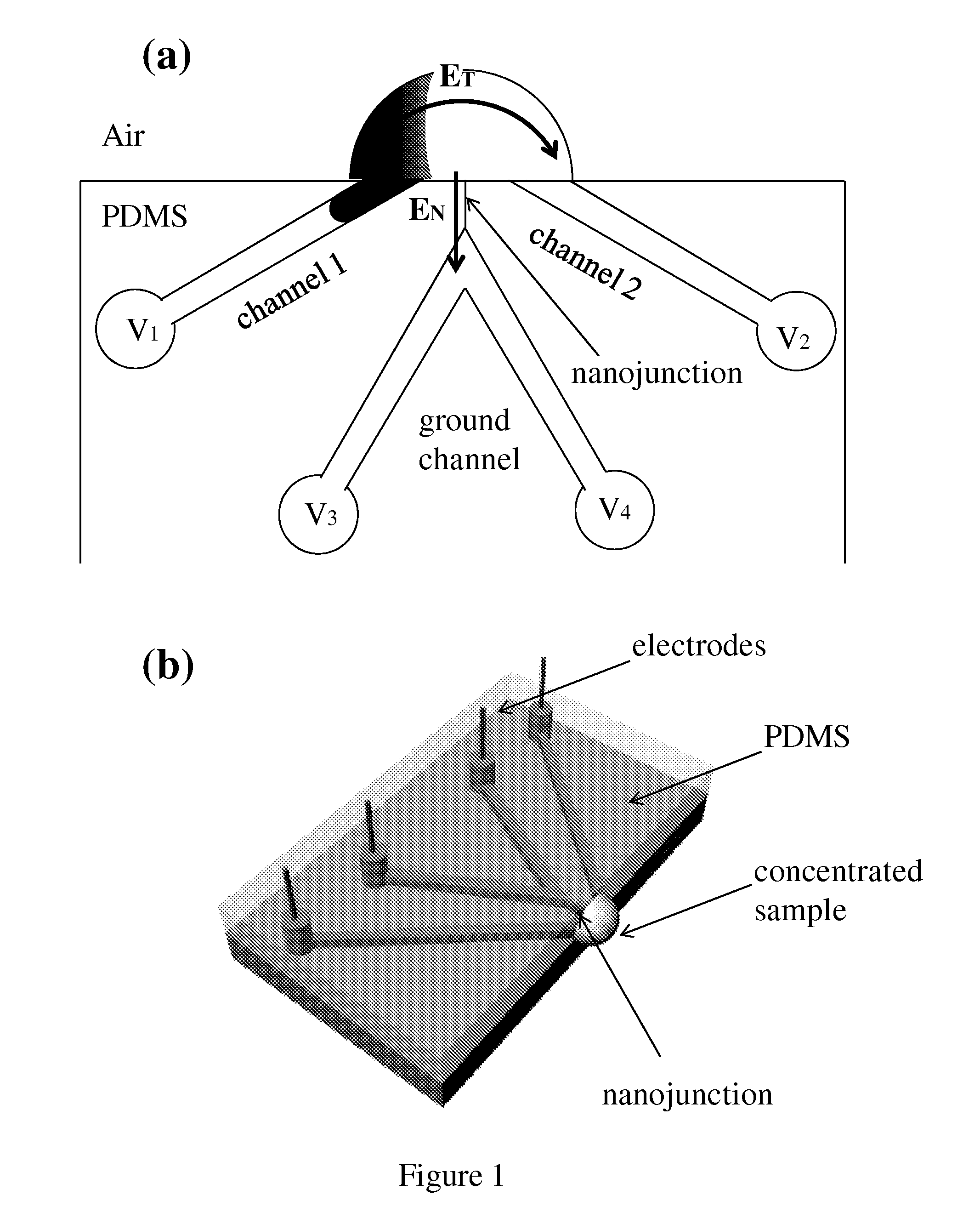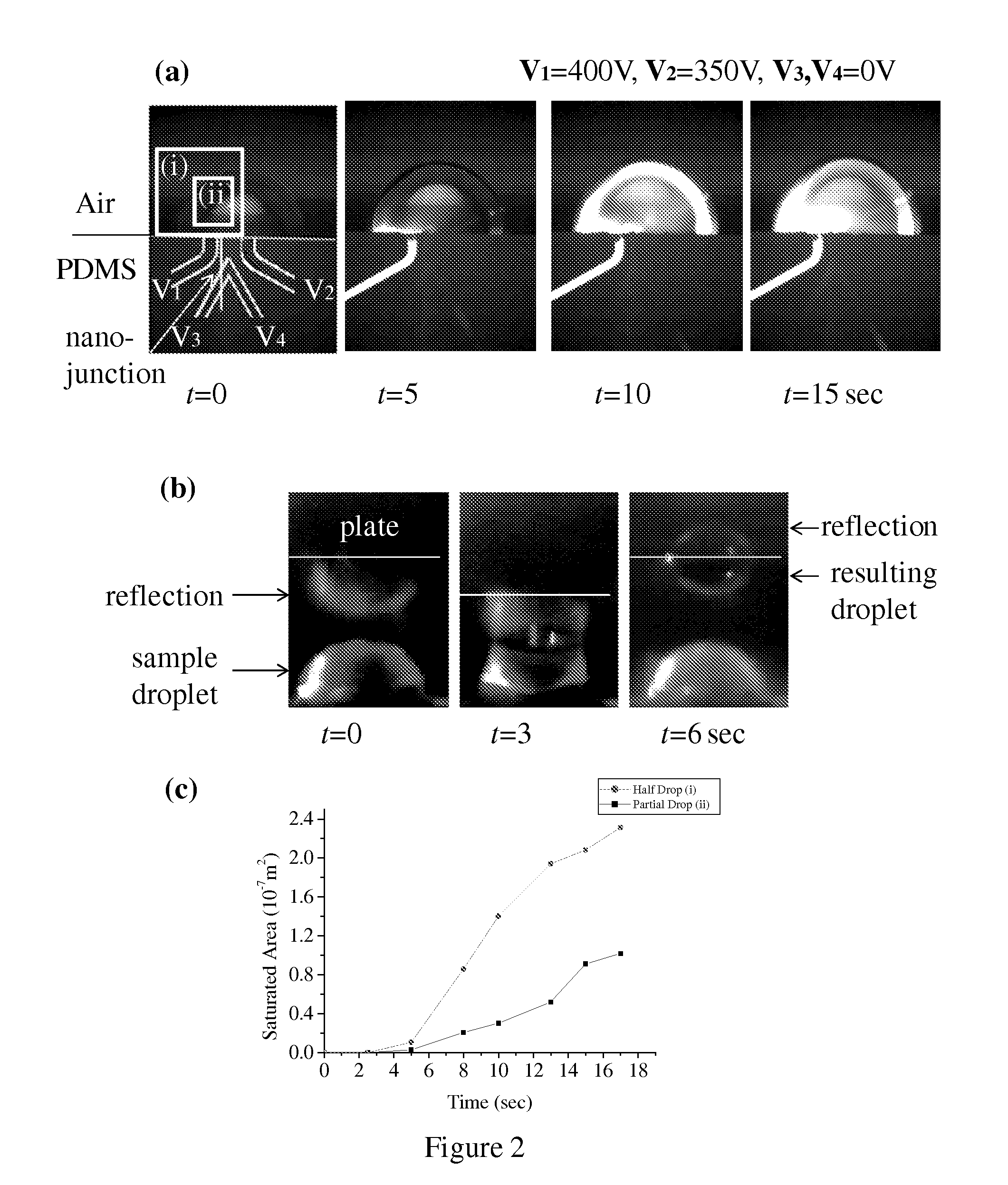Nanofluidic preconcentration device in an open environment
a technology of nano-fluoroquinoline and preconcentration device, which is applied in the direction of fluid pressure measurement, liquid/fluent solid measurement, peptide measurement, etc., can solve the problems of mass spectrometry (ms), limiting the delivery of such high-concentrated samples to a desired location, and affecting the extraction of concentrated plugs
- Summary
- Abstract
- Description
- Claims
- Application Information
AI Technical Summary
Benefits of technology
Problems solved by technology
Method used
Image
Examples
example 1
High Performance Preconcentrator
[0324]As shown in FIG. 1(a), two microchannels (channel 1 and channel 2) are open to the outside of the PDMS chip. Injecting sample liquid from either channel 1 or channel 2 can create droplet that can connect two channels. Ground channel, which buried inside the PDMS chip, is connected to the droplet through via nanojunction. Once DC was applied with depletion voltage conditions (V1=V2=V and V3=V4=0), CP was initiated and the ionic concentration in anodic side started to deplete (ion depletion zone) with the normal electric field (EN) through nanochannel. Then adjusting V2 lower than V1 (preconcentration voltage condition) gives tangential electric field (ET) through the droplet. With the application of the tangential electric field (ET), any charged species would accumulate and form a preconcentrated plug inside the droplet. The electric potential can be applied by the electrodes as shown in FIG. 1(b). This preconcentration voltage condition can als...
example 2
High Concentration Drop Dispenser
[0326]A microfluidic device is constructed. Due to its microscale size, the droplet on the PDMS chip has a hemispherical shape. With upper plate or objects touching the droplet, droplet changes itself into a liquid bridge. By moving the plate away, liquid bridge breaks apart into two droplets, splitting the samples into two (FIG. 2 (b)). In this method, concentrated sample transfers directly to the target plate without any driving force for transporting (external pressures or electric fields), restricting plug dispersion or electrodiffusion. Also, it can be easily integrated into a massively parallel sensor array (FIG. 3(a)) since the sample droplets locate at the edge of the device.
[0327]In addition to this, the parallelization can be done even without dispensing process as shown in FIG. 3(b). Microchannels in PDMS are bonded to large glass rather than PDMS itself so that the resulting droplets would be quarter spherical shape and directly react wit...
PUM
| Property | Measurement | Unit |
|---|---|---|
| depth | aaaaa | aaaaa |
| diameter | aaaaa | aaaaa |
| diameter | aaaaa | aaaaa |
Abstract
Description
Claims
Application Information
 Login to View More
Login to View More - R&D
- Intellectual Property
- Life Sciences
- Materials
- Tech Scout
- Unparalleled Data Quality
- Higher Quality Content
- 60% Fewer Hallucinations
Browse by: Latest US Patents, China's latest patents, Technical Efficacy Thesaurus, Application Domain, Technology Topic, Popular Technical Reports.
© 2025 PatSnap. All rights reserved.Legal|Privacy policy|Modern Slavery Act Transparency Statement|Sitemap|About US| Contact US: help@patsnap.com



